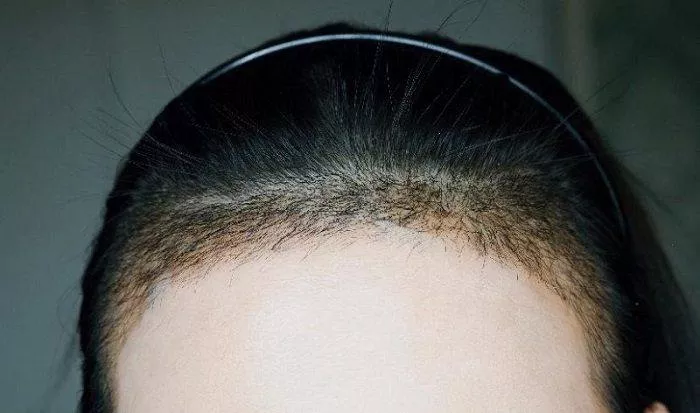Hair transplantation has become a widely accepted solution for treating hair loss, helping individuals regain confidence and a natural appearance. The success of a hair transplant largely depends on the type and quality of donor hair used. Not all hair is suitable for transplantation, and understanding which types can be used is crucial to achieving optimal outcomes. This article explores the four main types of hair that are commonly used in hair transplantation, their characteristics, suitability, and how they affect the results of the procedure.
Whether you are considering a transplant or just starting to research, it’s important to understand the Hair Transplant Types available and which donor hair sources are most effective. This knowledge can guide your decision and help you choose a procedure that matches your expectations and budget.
1. Scalp Hair: The Gold Standard for Hair Transplants
Scalp hair, particularly from the back and sides of the head, is the most commonly used type for hair transplantation. This area, known as the “safe donor zone,” typically retains hair even in individuals with advanced androgenetic alopecia (male or female pattern baldness).
Advantages of Scalp Hair:
Genetically resistant to balding
Perfect texture match for recipient areas
High survival rate after transplantation
Scalp hair is preferred because it mimics the natural growth pattern and texture of hair in the balding areas, making the transplant virtually undetectable when performed by an experienced surgeon.
2. Beard Hair: A Robust Alternative for Men
Beard hair is increasingly used in hair transplants, especially when scalp donor hair is insufficient. It is most commonly extracted from the underside of the chin or the neck area. Beard hair tends to be thicker and coarser, which can add density and volume when mixed with scalp hair in the transplant.
Advantages of Beard Hair:
Strong and robust follicles
High yield and growth rate
Less visible donor scars due to facial hair coverage
Beard hair is typically used in areas that require added density rather than the frontal hairline, as the texture difference can be noticeable. However, skilled surgeons can blend it effectively for natural results.
3. Chest Hair: A Viable Secondary Option
Chest hair can be used as a donor source, particularly in body hair transplantation (BHT). This method is considered when both scalp and beard hair are insufficient. Chest hair is typically finer and shorter, so it is less ideal for areas like the hairline but can be used for adding coverage in the crown area.
Advantages of Chest Hair:
Expands donor pool for patients with limited scalp hair
Useful for patients with extensive baldness
Suitable for blending into existing scalp hair
The success of using chest hair depends on the individual’s hair characteristics and the surgeon’s experience in handling non-scalp donor hairs. While chest hair can complement a transplant, it is often used in combination with scalp or beard hair.
4. Leg and Arm Hair: Rare but Possible Sources
In rare cases, hair from the legs or arms may be used for transplantation. This is typically a last-resort option and only considered when all other donor areas are exhausted. Leg and arm hair is usually very fine and has a shorter growth phase, which can impact the aesthetic quality of the transplant.
Advantages of Leg/Arm Hair:
Provides an additional donor source
Can be used for touch-ups or softening hairlines
Minimally visible extraction sites
Despite its limitations, arm or leg hair can still contribute positively in specific situations. These hairs are best used in low-density areas where their finer texture can soften transitions or improve the overall natural appearance.
Comparing Donor Hair Types for the Best Results
The choice of donor hair greatly affects the outcome of a hair transplant. Here’s a quick comparison:
Scalp Hair: Best match in texture and growth pattern
Beard Hair: High density, good for volume, but coarser
Chest Hair: Fine texture, good for coverage in certain areas
Leg/Arm Hair: Least preferred, but useful in select cases
Each hair type has its pros and cons, and a qualified surgeon can help determine the right combination to achieve your desired results.
Key Considerations Before Choosing a Hair Transplant
Before undergoing a hair transplant, it’s essential to evaluate several factors:
Quality and quantity of donor hair
Hair texture and color match
Extent of hair loss and desired density
Type of transplant method (FUE, FUT, BHT)
Overall health and medical history
Patients should also be aware of the Hair Transplant Types and understand which one suits their condition best. Follicular Unit Extraction (FUE) and Follicular Unit Transplantation (FUT) are the most commonly used methods, each with specific applications and recovery times.
Understanding Hair Transplant Costs and Long-Term Value
Hair transplant procedures can vary significantly in cost depending on the number of grafts required, the type of donor hair used, and the expertise of the surgeon. It is important to consider not just the upfront cost but also the long-term value.
For a detailed overview of what to expect financially, refer to this guide on Hair Transplant Costs.
Investing in a skilled surgeon and high-quality procedure may cost more initially but offers greater satisfaction and longevity of results. Choosing the right donor hair type also ensures that the transplant looks natural and lasts for years.
Conclusion
Understanding the types of hair that can be used for hair transplantation is essential for achieving the best outcome. Scalp hair remains the preferred choice, but beard, chest, and even leg or arm hair can play important roles, especially in complex cases. A thorough consultation with an experienced hair transplant surgeon will help determine the most suitable donor hair for your unique needs.
With the right approach, even individuals with limited scalp donor hair can experience successful restoration. Stay informed, explore all Hair Transplant Types, and weigh the Hair Transplant Costs to make an empowered decision that supports your long-term hair restoration goals.
Related Topics:

